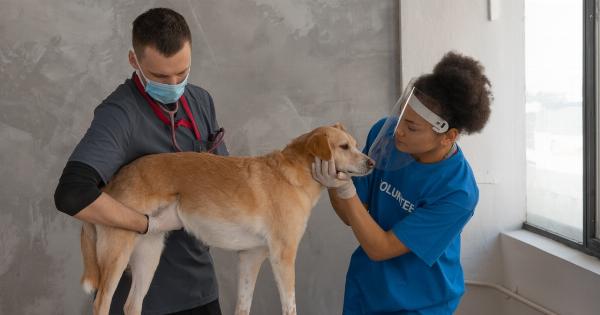The paws of our furry companions are essential for their mobility, balance, and overall well-being. Just like humans, dogs and cats can experience discomfort and pain in their paws.
As responsible pet owners, it is crucial to understand the potential causes of paw agony and take appropriate measures to alleviate their suffering. In this article, we will delve into the common reasons behind paw discomfort in pets and explore ways to address and prevent such issues.
1. Allergies and Dermatitis
Allergies can affect pets just as they do humans. Dogs and cats can develop allergic reactions to various substances, such as certain foods, pollen, dust mites, or even certain fabrics.
These allergies often manifest on their paws, leading to redness, itchiness, and inflammation. Additionally, pets may suffer from contact dermatitis when exposed to irritants like specific chemicals or cleaning agents.
2. Infections
Paw infections are quite common in pets. Bacteria, yeast, and other pathogens can invade the skin through cuts, abrasions, or even between the toes.
Infections may cause swelling, pain, pus, and a foul smell, indicating an underlying issue that requires prompt attention. Failing to treat paw infections promptly can result in more severe complications.
3. Ingrown Nails
Ingrown nails occur when a pet’s nails grow into the sensitive paw pads. This condition typically causes discomfort while walking and can lead to infections or even limping if left untreated.
Regular trimming of your pet’s nails is crucial to prevent this painful issue. If you are unsure how to safely trim your pet’s nails, consult a veterinarian or a professional groomer for guidance.
4. Foreign Objects
Curious pets often explore their surroundings with their paws. In the process, they may pick up foreign objects like thorns, splinters, or shards of broken glass, which can become lodged in their paw pads.
These foreign objects can cause pain, infection, or even create wounds that require medical intervention. Checking and cleaning your pet’s paws after outdoor activities can help prevent such issues.
5. Paw Pad Injuries
Paw pads are susceptible to various injuries like cuts, burns, abrasions, or blisters. These injuries can occur from walking on rough terrain, hot surfaces, or even chemicals.
Pets may experience significant discomfort, difficulty walking, or even refuse to put weight on a wounded paw. Providing appropriate protection like booties or avoiding hazardous surfaces can reduce the risk of paw pad injuries.
6. Arthritis and Joint Issues
Pets, especially older ones, can suffer from arthritis or other joint-related conditions that affect their paws. Arthritis causes inflammation, stiffness, and pain in the joints, making it challenging for pets to walk or move comfortably.
Ensuring your pet maintains a healthy weight, providing joint supplements, and engaging in low-impact exercises can help alleviate paw-related discomfort caused by arthritis.
7. Tumors
Pets can develop tumors or cysts on their paws, which can result in pain and discomfort. It is important to regularly check your pet’s paws for any unusual lumps, bumps, or growths.
If you notice anything concerning, consult your veterinarian for proper evaluation and potential treatment options.
8. Burns and Frostbite
Extreme weather conditions can wreak havoc on your pet’s paws. Exposing their paws to scorching pavements or hot surfaces can cause painful burns, while walking on icy or frozen surfaces puts them at risk of frostbite.
It is crucial to protect your pet’s paws in extreme weather conditions by using pet-safe winter booties or walking them during cooler times of the day.
9. Autoimmune Diseases
Autoimmune diseases can lead to paw discomfort in pets. Conditions like lupus or pemphigus can cause the immune system to attack healthy cells, including those present in the paws. This can result in painful sores, blisters, or lesions.
Prompt diagnosis and appropriate treatment by a veterinarian are necessary to manage these autoimmune conditions effectively.
10. Behavioral Causes
It’s essential to consider potential behavioral causes for paw discomfort in pets. Excessive chewing, licking, or gnawing on their paws may indicate anxiety, boredom, or even allergies.
Determining and addressing the underlying cause of these behaviors can help alleviate paw discomfort and prevent further complications.
In Conclusion
Paw agony in pets can significantly impact their quality of life, and it is our responsibility as pet owners to prioritize their well-being.
By understanding the various reasons behind paw discomfort, we can take appropriate preventive measures and seek timely veterinary care when needed. Regular paw inspections, maintaining proper hygiene, and providing a safe environment are essential in ensuring our furry friends lead happy, pain-free lives.





























